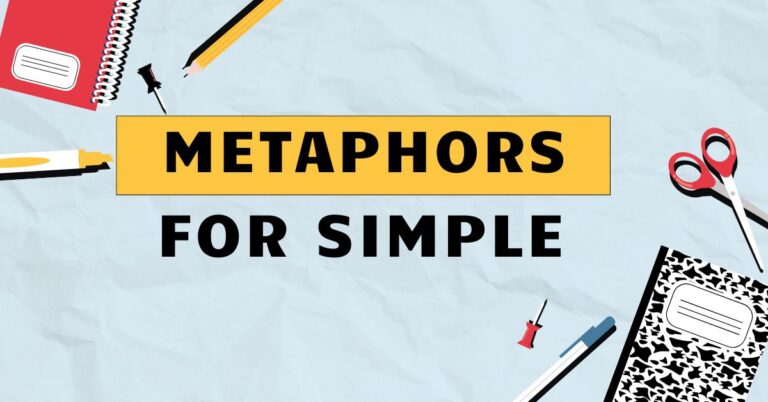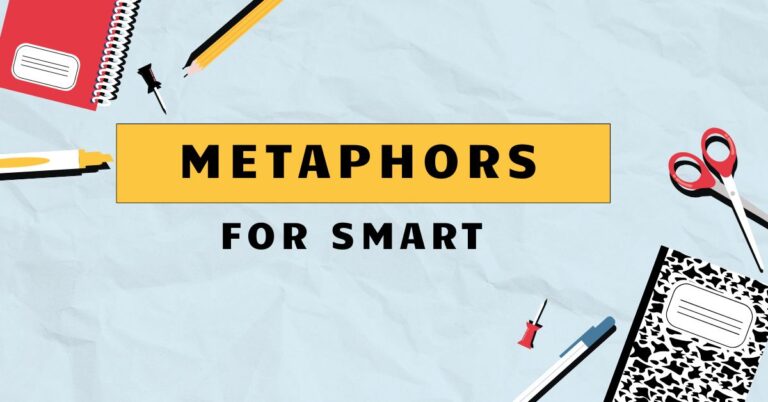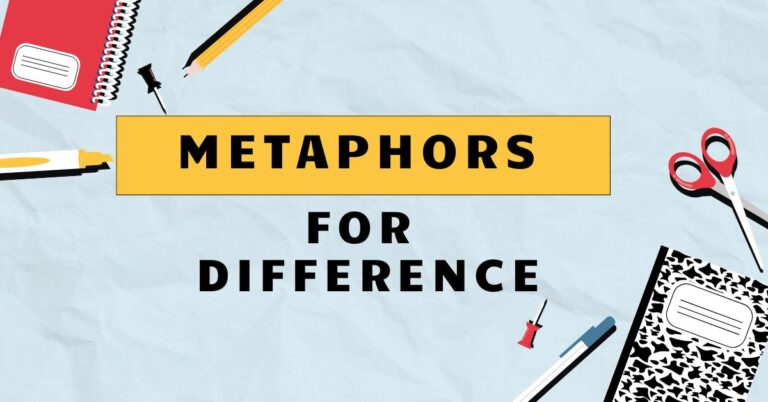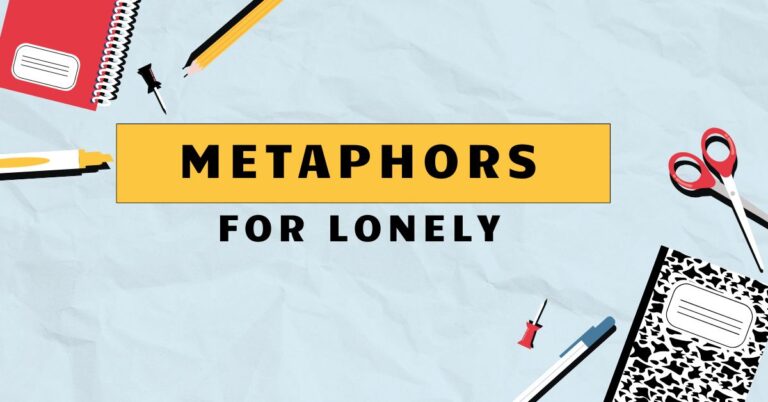41 Metaphors For God: Understanding Figurative Language
Understanding metaphors for God is crucial for interpreting religious texts, theological discussions, and spiritual expressions. Metaphors provide a way to articulate the ineffable, offering relatable concepts to grasp the divine.
This exploration enhances comprehension of religious literature and improves communication about faith. This article benefits students of theology, religious studies enthusiasts, and anyone interested in the intersection of language and spirituality.
By exploring these metaphors, readers can gain a deeper appreciation for the richness and complexity of religious thought.
Table of Contents
- Definition of Metaphors for God
- Structural Breakdown of Metaphors
- Types and Categories of Metaphors for God
- Examples of Metaphors for God
- Usage Rules for Metaphors
- Common Mistakes in Using Metaphors
- Practice Exercises
- Advanced Topics in Metaphors
- Frequently Asked Questions
- Conclusion
Definition of Metaphors for God
A metaphor for God is a figure of speech that describes God using terms and concepts that are not literally applicable. It is a way of understanding and expressing the nature, attributes, and actions of the divine by drawing parallels with familiar aspects of human experience.
These metaphors are essential tools in religious language, as they allow theologians, writers, and believers to communicate about the transcendent and the unknowable.
Metaphors for God can be classified based on their source domain (the concept used to describe God) and their target domain (God). For example, if God is described as a “rock,” the source domain is the physical object “rock,” and the target domain is God.
The function of these metaphors is to provide insight into God’s characteristics, such as strength, stability, or protection. These metaphors appear in various contexts, including scripture, prayer, hymns, and theological discourse.
Classification of Metaphors
Metaphors for God can be classified in several ways. One approach is to categorize them based on the aspect of God they emphasize: attributes, actions, or relationship with humanity.
Another method is to group them by their source domain, such as nature, human roles, or abstract concepts. For instance, metaphors drawn from nature might include “God is the sun” or “God is the wind,” highlighting God’s life-giving or powerful presence.
Metaphors based on human roles could be “God is a father” or “God is a shepherd,” emphasizing care and guidance. Abstract metaphors might describe God as “love” or “truth,” focusing on essential qualities.
Function of Metaphors in Religious Language
The primary function of metaphors for God is to make the divine understandable and relatable. Since God is often considered beyond human comprehension, metaphors provide a bridge, allowing individuals to grasp aspects of God’s nature and actions.
These metaphors also serve to evoke emotions, inspire devotion, and encourage specific behaviors. For example, the metaphor of God as a “refuge” can offer comfort and security in times of distress, while the metaphor of God as a “judge” can promote moral accountability.
Contexts in Which Metaphors Appear
Metaphors for God are found in a wide range of contexts within religious traditions. They are prevalent in sacred texts, such as the Bible, the Quran, and the Bhagavad Gita.
They also appear in prayers, hymns, sermons, and theological writings. In personal devotion, individuals often use metaphors to express their relationship with God.
Furthermore, metaphors for God play a significant role in religious art, music, and literature, enriching cultural expressions of faith. Understanding these contexts is crucial for interpreting and appreciating the diverse ways in which God is conceptualized and described.
Structural Breakdown of Metaphors
The structure of a metaphor for God involves two main elements: thetenorand thevehicle. The tenor is the subject being described (God), and the vehicle is the concept used to describe it.
The relationship between the tenor and the vehicle is based on shared characteristics or qualities. For example, in the metaphor “God is a fortress,” God is the tenor, and “fortress” is the vehicle.
The shared characteristic is protection or security.
Understanding the underlying meaning requires recognizing the implied comparison. The metaphor suggests that God possesses qualities similar to those of a fortress, such as strength, reliability, and the ability to provide shelter.
The effectiveness of a metaphor depends on the clarity and relevance of the connection between the tenor and the vehicle. A well-chosen metaphor can reveal new insights and deepen understanding, while a poorly chosen one can be confusing or misleading.
Tenor and Vehicle Explained
Thetenoris the aspect of God that the metaphor aims to illuminate. It represents the abstract or complex idea that is being made more accessible through comparison.
Thevehicle, on the other hand, is the concrete image or concept used to represent the tenor. It draws upon familiar experiences and associations to create a vivid and relatable picture.
The relationship between the tenor and vehicle is not arbitrary; it is based on shared attributes or qualities that resonate with the intended audience.
The Implied Comparison
The power of a metaphor lies in its implied comparison. Unlike a simile, which explicitly states the comparison using words like “like” or “as,” a metaphor asserts that the tenoristhe vehicle.
This creates a more direct and impactful connection, inviting the listener or reader to perceive the tenor in a new light. The implied comparison encourages active engagement and imaginative thinking, leading to a deeper understanding of the subject being described.
For instance, when God is referred to as “light,” the implied comparison suggests that God illuminates, guides, and reveals truth, just as light dispels darkness.
Effectiveness of Metaphors
The effectiveness of a metaphor depends on several factors, including its originality, relevance, and clarity. An original metaphor can offer fresh insights and challenge conventional thinking, while a cliché metaphor may lack impact.
Relevance is crucial because the connection between the tenor and vehicle must be meaningful and appropriate for the context. Clarity ensures that the metaphor is easily understood and does not create confusion.
A well-crafted metaphor can transform understanding and evoke powerful emotions, while a poorly crafted one can obscure meaning and diminish its impact. Consider the metaphor “God is a potter.” It is effective because it conveys the idea of God shaping and molding individuals, emphasizing God’s creative and transformative power.
Types and Categories of Metaphors for God
Metaphors for God can be categorized based on various criteria, including their source domain, the aspect of God they emphasize, and their cultural context. Common categories include metaphors drawn from nature, human relationships, occupations, and abstract concepts.
Each category offers unique perspectives on the divine and reflects different cultural and theological traditions.
Nature-Based Metaphors
Nature-based metaphors use elements from the natural world to describe God. These metaphors often highlight God’s power, beauty, and life-giving qualities.
Examples include “God is the sun,” “God is the rain,” and “God is the rock.” These metaphors connect God to the tangible world and emphasize the divine presence in creation. The sun represents God’s illuminating and life-sustaining nature, while the rain symbolizes God’s provision and renewal.
The rock signifies God’s stability and strength.
Relationship-Based Metaphors
Relationship-based metaphors use human relationships to describe God’s connection with humanity. These metaphors often emphasize love, care, and guidance.
Examples include “God is a father,” “God is a mother,” and “God is a friend.” These metaphors highlight the personal and relational aspects of God, emphasizing the divine desire for connection and intimacy with individuals. Describing God as a father or mother conveys the idea of nurturing, protection, and unconditional love.
Referring to God as a friend emphasizes companionship, support, and mutual understanding.
Occupation-Based Metaphors
Occupation-based metaphors use professions or roles to describe God’s actions and attributes. These metaphors often emphasize God’s work, skill, and authority.
Examples include “God is a shepherd,” “God is a king,” and “God is a potter.” These metaphors illustrate God’s active involvement in the world and emphasize the divine role in guiding, ruling, and shaping humanity. The shepherd metaphor conveys the idea of God caring for and protecting his flock, while the king metaphor emphasizes God’s sovereignty and justice.
The potter metaphor highlights God’s creative and transformative power.
Abstract Concept Metaphors
Abstract concept metaphors use abstract ideas to describe God’s essential qualities. These metaphors often emphasize God’s goodness, truth, and beauty.
Examples include “God is love,” “God is truth,” and “God is justice.” These metaphors focus on the fundamental nature of God, emphasizing the divine essence as the source of all that is good and right. Describing God as love conveys the idea of unconditional affection and compassion, while referring to God as truth emphasizes honesty, integrity, and the foundation of reality.
God as justice signifies fairness, righteousness, and the upholding of moral order.
Examples of Metaphors for God
Here are some examples of metaphors for God, categorized by type. Each category provides a range of examples to illustrate the diverse ways in which God is described and understood.
Examples of Nature-Based Metaphors
The following table provides examples of nature-based metaphors for God, illustrating how elements of the natural world are used to describe the divine.
| Metaphor | Explanation | Example Sentence |
|---|---|---|
| God is the sun | God provides light, warmth, and life. | “God is the sun, illuminating our path and warming our hearts.” |
| God is the rain | God brings nourishment, growth, and renewal. | “God is the rain, showering us with blessings and refreshing our souls.” |
| God is the rock | God is a source of strength, stability, and protection. | “God is the rock, our steadfast foundation in times of trouble.” |
| God is the wind | God is powerful, invisible, and moves in mysterious ways. | “God is the wind, unseen yet felt, guiding us with gentle whispers.” |
| God is a river | God is a constant flow of life and sustenance. | “God is a river, always flowing, providing life and abundance.” |
| God is a mountain | God is majestic, powerful, and unshakeable. | “God is a mountain, towering above us, a symbol of strength and endurance.” |
| God is a fire | God is purifying, transformative, and passionate. | “God is a fire, burning away our impurities and igniting our spirits.” |
| God is the ocean | God is vast, deep, and encompasses all things. | “God is the ocean, infinite and boundless, containing all of creation.” |
| God is the stars | God is a guide, a source of hope, and shines in the darkness. | “God is the stars, shining brightly in the night sky, guiding us through the darkness.” |
| God is the earth | God is nurturing, provides sustenance, and is the foundation of life. | “God is the earth, providing nourishment and supporting all life.” |
| God is the dawn | God is the beginning of new hope and a fresh start. | “God is the dawn, bringing new hope and a fresh start to each day.” |
| God is the forest | God is a place of refuge, growth, and interconnectedness. | “God is the forest, a place of refuge where we find growth and interconnectedness.” |
| God is the desert | God tests and refines, revealing strength in barrenness. | “God is the desert, testing us and revealing our strength in barrenness.” |
| God is the moon | God reflects light, provides guidance in darkness, and is cyclical. | “God is the moon, reflecting light and guiding us in the darkness.” |
| God is the seed | God represents potential, growth, and new beginnings. | “God is the seed, representing potential and new beginnings in our lives.” |
| God is the sky | God is limitless, expansive, and all-encompassing. | “God is the sky, limitless and expansive, encompassing all of creation.” |
| God is the spring | God is renewal, rebirth, and a source of fresh life. | “God is the spring, bringing renewal and a source of fresh life.” |
| God is the thunder | God is powerful, awe-inspiring, and commands attention. | “God is the thunder, powerful and awe-inspiring, commanding our attention.” |
| God is the lightning | God is sudden, illuminating, and reveals truth in an instant. | “God is the lightning, suddenly illuminating our path and revealing truth.” |
| God is the tide | God has rhythmic influence, ebbs and flows, and is constant. | “God is the tide, rhythmically influencing our lives with a constant presence.” |
| God is the valley | God is a place of humility, growth, and quiet reflection. | “God is the valley, a place of humility and quiet reflection.” |
| God is the garden | God is a place of beauty, growth, and divine care. | “God is the garden, a place of beauty and divine care.” |
| God is the tree | God is a source of life, shelter, and strength. | “God is the tree, providing life, shelter, and strength to all who seek refuge.” |
Examples of Relationship-Based Metaphors
The following table provides examples of relationship-based metaphors for God, illustrating how human relationships are used to describe the divine.
| Metaphor | Explanation | Example Sentence |
|---|---|---|
| God is a father | God provides love, guidance, and protection. | “God is a father, watching over us with unwavering love and care.” |
| God is a mother | God offers nurturing, comfort, and unconditional love. | “God is a mother, cradling us in her arms and offering endless comfort.” |
| God is a friend | God provides companionship, support, and understanding. | “God is a friend, always there to listen and offer support in times of need.” |
| God is a lover | God offers passionate love, devotion, and intimacy. | “God is a lover, embracing us with passionate love and unwavering devotion.” |
| God is a sibling | God offers shared experiences, camaraderie, and mutual support. | “God is a sibling, sharing our joys and sorrows and offering mutual support.” |
| God is a guardian | God is watchful, protective, and ensures safety. | “God is a guardian, always watchful and ensuring our safety.” |
| God is a teacher | God imparts wisdom, knowledge, and guidance. | “God is a teacher, imparting wisdom and guiding us on our path.” |
| God is a healer | God restores, mends, and brings wholeness. | “God is a healer, restoring our brokenness and bringing us wholeness.” |
| God is a comforter | God soothes, consoles, and provides solace. | “God is a comforter, soothing our sorrows and providing solace in times of grief.” |
| God is a partner | God collaborates, supports, and shares in our journey. | “God is a partner, collaborating with us and sharing in our life’s journey.” |
| God is a guide | God leads, directs, and shows the way. | “God is a guide, leading us through life’s challenges and showing us the way.” |
| God is a protector | God shields, defends, and keeps us safe. | “God is a protector, shielding us from harm and keeping us safe.” |
| God is a counselor | God advises, supports, and helps us navigate challenges. | “God is a counselor, advising us and helping us navigate life’s challenges.” |
| God is a shepherd | God guides, protects, and cares for His flock. | “God is a shepherd, guiding and caring for His flock with unwavering devotion.” |
| God is a mentor | God inspires, encourages, and provides guidance. | “God is a mentor, inspiring us to reach our full potential and providing guidance.” |
| God is a confidant | God listens, understands, and keeps our secrets. | “God is a confidant, listening to our innermost thoughts and keeping our secrets.” |
| God is a provider | God supplies our needs, offers sustenance, and ensures well-being. | “God is a provider, supplying our needs and ensuring our well-being.” |
| God is a companion | God accompanies us, shares our experiences, and is always present. | “God is a companion, always present and sharing in our life’s experiences.” |
| God is a witness | God observes, acknowledges, and understands our actions and motives. | “God is a witness, observing our actions and understanding our motives.” |
| God is a benefactor | God bestows blessings, gifts, and favors upon us. | “God is a benefactor, bestowing blessings and gifts upon us.” |
| God is a patron | God supports, champions, and advocates for us. | “God is a patron, supporting us and advocating for our well-being.” |
| God is a sustainer | God maintains, upholds, and preserves our lives. | “God is a sustainer, maintaining and preserving our lives.” |
| God is a benefactor | God provides aid, relief, and support in times of need. | “God is a benefactor, providing aid and relief in times of need.” |
Examples of Occupation-Based Metaphors
The following table provides examples of occupation-based metaphors for God, illustrating how different professions are used to describe the divine.
| Metaphor | Explanation | Example Sentence |
|---|---|---|
| God is a shepherd | God guides, protects, and cares for His flock. | “God is a shepherd, leading us to green pastures and protecting us from harm.” |
| God is a king | God rules with authority, justice, and wisdom. | “God is a king, ruling with justice and guiding us with wisdom.” |
| God is a potter | God shapes, molds, and transforms us into something beautiful. | “God is a potter, molding us into vessels of grace and beauty.” |
| God is a builder | God constructs, establishes, and creates a lasting foundation. | “God is a builder, constructing a strong foundation for our lives.” |
| God is a judge | God evaluates, discerns, and administers justice. | “God is a judge, evaluating our actions and administering justice with fairness.” |
| God is a gardener | God cultivates, nurtures, and helps us grow. | “God is a gardener, cultivating our souls and helping us grow.” |
| God is a weaver | God intricately connects the threads of our lives. | “God is a weaver, intricately connecting the threads of our lives into a beautiful tapestry.” |
| God is a watchman | God is always vigilant, guarding us from danger. | “God is a watchman, always vigilant and guarding us from danger.” |
| God is a physician | God heals our wounds and restores our health. | “God is a physician, healing our wounds and restoring our spiritual health.” |
| God is a teacher | God imparts knowledge and guides us to understanding. | “God is a teacher, imparting knowledge and guiding us to greater understanding.” |
| God is a lighthouse | God guides us safely through treacherous waters. | “God is a lighthouse, guiding us safely through the treacherous waters of life.” |
| God is a conductor | God orchestrates our lives with divine harmony. | “God is a conductor, orchestrating our lives with divine harmony.” |
| God is a craftsman | God meticulously creates and designs our destiny. | “God is a craftsman, meticulously creating and designing our destiny.” |
| God is a architect | God plans, designs, and constructs the blueprint of our lives. | “God is a architect, planning and designing the blueprint of our lives.” |
| God is a pilot | God navigates us through life’s journey. | “God is a pilot, navigating us safely through life’s journey.” |
| God is a banker | God invests in us and provides spiritual wealth. | “God is a banker, investing in us and providing spiritual wealth.” |
| God is a blacksmith | God forges us in the fires of life, making us stronger. | “God is a blacksmith, forging us in the fires of life, making us stronger and more resilient.” |
| God is a clockmaker | God meticulously plans and orders our lives. | “God is a clockmaker, meticulously planning and ordering the events of our lives.” |
| God is a sculptor | God shapes and refines us into His image. | “God is a sculptor, shaping and refining us into His image.” |
| God is a tailor | God fits us with righteousness and grace. | “God is a tailor, fitting us with righteousness and grace.” |
| God is a librarian | God knows and preserves our stories. | “God is a librarian, knowing and preserving the stories of our lives.” |
| God is a musician | God creates the symphony of our lives. | “God is a musician, creating the symphony of our lives with harmony and purpose.” |
Examples of Abstract Concept Metaphors
The following table provides examples of abstract concept metaphors for God, illustrating how abstract ideas are used to describe the divine.
| Metaphor | Explanation | Example Sentence |
|---|---|---|
| God is love | God embodies perfect, unconditional love. | “God is love, embracing all with compassion and grace.” |
| God is truth | God is the ultimate source of reality and honesty. | “God is truth, guiding us with unwavering honesty and integrity.” |
| God is justice | God ensures fairness, righteousness, and moral order. | “God is justice, ensuring fairness and upholding moral order in the world.” |
| God is peace | God offers serenity, harmony, and reconciliation. | “God is peace, offering serenity and harmony to our troubled souls.” |
| God is hope | God is the source of optimism, faith, and positive expectation. | “God is hope, filling our hearts with faith and positive expectation.” |
| God is mercy | God is compassionate, forgiving, and shows kindness. | “God is mercy, forgiving our transgressions and showing us kindness.” |
| God is grace | God is undeserved favor, kindness, and divine assistance. | “God is grace, bestowing undeserved favor and divine assistance upon us.” |
| God is wisdom | God is profound understanding, insight, and knowledge. | “God is wisdom, guiding us with profound understanding and insight.” |
| God is strength | God is power, resilience, and unwavering support. | “God is strength, providing us with power and unwavering support.” |
| God is light | God illuminates, guides, and dispels darkness. | “God is light, illuminating our path and dispelling the darkness within.” |
| God is goodness | God is moral excellence, virtue, and righteousness. | “God is goodness, embodying moral excellence and righteousness.” |
| God is beauty | God is aesthetic perfection, harmony, and delight. | “God is beauty, reflected in the harmony and delight of creation.” |
| God is freedom | God is liberation, autonomy, and release from bondage. | “God is freedom, liberating us from bondage and granting us autonomy.” |
| God is the Way | God is the path, direction, and true course of life. | “God is the Way, guiding us on the true course of life.” |
| God is the Life | God is the essence of existence, vitality, and eternal being. | “God is the Life, the essence of our existence and eternal being.” |
| God is the Word | God is communication, expression, and divine revelation. | “God is the Word, communicating divine revelation and truth.” |
| God is the Source | God is the origin, beginning, and foundation of all things. | “God is the Source, the origin and foundation of all creation.” |
| God is the Answer | God is the solution, resolution, and fulfillment of our needs. | “God is the Answer, fulfilling our deepest needs and resolving our questions.” |
| God is the Beginning | God is the inception, origin, and start of all creation. | “God is the Beginning, the inception of all that exists.” |
| God is the End | God is the culmination, destiny, and ultimate purpose. | “God is the End, the ultimate purpose and destiny of all things.” |
Usage Rules for Metaphors
Using metaphors effectively requires attention to several rules. First, ensure that the metaphor is appropriate for the context and audience.
Second, maintain consistency within the metaphor. Third, avoid mixed metaphors, which can create confusion.
Fourth, be mindful of cultural and religious sensitivities. Fifth, use metaphors sparingly to avoid overwhelming the audience.
Appropriateness for Context and Audience
The appropriateness of a metaphor depends on the specific context in which it is used and the characteristics of the intended audience. A metaphor that resonates with one group may be confusing or offensive to another.
Consider the cultural background, religious beliefs, and level of understanding of your audience when choosing a metaphor. For example, a metaphor drawn from agricultural practices may be effective in a rural community but less so in an urban setting.
Similarly, a metaphor that references a specific religious tradition may be meaningful to believers but incomprehensible to those outside that tradition.
Maintaining Consistency within the Metaphor
Consistency is essential for maintaining the clarity and effectiveness of a metaphor. Once you have established a metaphorical framework, avoid introducing elements that contradict or undermine it.
Inconsistent metaphors can create confusion and weaken the overall impact of your message. For example, if you describe God as a “shepherd,” continue to use imagery and language that aligns with the shepherd metaphor, such as “flock,” “pasture,” and “staff.” Avoid mixing metaphors from unrelated domains, such as describing God as both a “shepherd” and a “skyscraper,” as this can create a disjointed and confusing image.
Avoiding Mixed Metaphors
Mixed metaphors occur when two or more unrelated metaphors are combined in a way that creates a nonsensical or contradictory image. These can confuse and distract the audience, undermining the effectiveness of your communication.
For example, “We must nip it in the bud before it comes home to roost” combines two unrelated metaphors: stopping something early (“nip it in the bud”) and facing the consequences later (“comes home to roost”). To avoid mixed metaphors, carefully consider the images and associations evoked by your words and ensure that they align logically and consistently.
Cultural and Religious Sensitivities
When using metaphors for God, it is crucial to be mindful of cultural and religious sensitivities. Different cultures and religious traditions may have varying interpretations and associations with specific images and symbols.
A metaphor that is considered positive and respectful in one context may be viewed as offensive or inappropriate in another. Research and understand the cultural and religious norms of your audience before using a metaphor.
Avoid metaphors that could be perceived as disrespectful, dismissive, or appropriative of other cultures or religions. Always strive to use metaphors that promote understanding, respect, and inclusivity.
Use Metaphors Sparingly
While metaphors can be powerful tools for communication, it is important to use them sparingly. Overusing metaphors can overwhelm the audience and diminish their impact.
Too many metaphors can clutter your message and make it difficult to follow. Use metaphors strategically to highlight key points and enhance understanding, but avoid relying on them excessively.
Balance metaphorical language with clear, direct statements to ensure that your message is both engaging and accessible. When in doubt, err on the side of simplicity and clarity.
Common Mistakes in Using Metaphors
Common mistakes in using metaphors include choosing inappropriate metaphors, mixing metaphors, overusing metaphors, and failing to explain the intended meaning. Understanding these mistakes can help you avoid them and use metaphors more effectively.
Incorrect: God is a fast car.
Correct: God is a guiding light.
Incorrect: We must nip it in the bud before it comes home to roost. (mixed metaphor)
Correct: We must address the issue promptly to avoid future problems.
Incorrect: God is a river, a mountain, a tree, a star, all at once. (overuse)
Correct: God is like a mountain, steadfast and strong.
Practice Exercises
Test your understanding of metaphors for God with these practice exercises.
Exercise 1: Identifying Metaphors
Identify the metaphor for God in each sentence.
| Question | Answer |
|---|---|
| 1. God is the potter, shaping our lives with care. | Potter |
| 2. The Lord is my shepherd; I shall not want. | Shepherd |
| 3. God is a fortress, our refuge in times of trouble. | Fortress |
| 4. God is the sun, illuminating our path. | Sun |
| 5. God is a mother, cradling us in her arms. | Mother |
| 6. God is a rock, our steadfast foundation. | Rock |
| 7. God is the wind, unseen yet felt. | Wind |
| 8. God is love, embracing all with compassion. | Love |
| 9. God is truth, guiding us with honesty. | Truth |
| 10. God is justice, ensuring fairness for all. | Justice |
Exercise 2: Correcting Mixed Metaphors
Rewrite the following sentences to correct the mixed metaphors.
| Question | Answer |
|---|---|
| 1. We must nip it in the bud before it comes home to roost. | We must address the issue promptly to avoid future problems. |
| 2. That idea is a double-edged sword that will open a can of worms. | That idea is a double-edged sword that
may have unintended consequences. |
| 3. Let’s grab the bull by the horns and put all our eggs in one basket. | Let’s tackle the challenge head-on with a focused approach. |
| 4. The early bird catches the worm, so we must strike while the iron is hot. | We must act quickly to take advantage of this opportunity. |
| 5. It’s a slippery slope that could lead to a Pandora’s box. | It’s a dangerous path that could unleash unforeseen problems. |
Exercise 3: Creating Metaphors
Create your own metaphor for God, using the following prompts.
- God is like a ________ because ________.
- If God were an animal, God would be a ________ because ________.
- God is the ________ of my life because ________.
Advanced Topics in Metaphors
Delve deeper into the study of metaphors for God by exploring advanced topics such as the philosophical implications of using metaphors, the role of metaphors in shaping religious beliefs, and the cross-cultural comparison of metaphors for God.
Philosophical Implications
The use of metaphors for God raises profound philosophical questions about the nature of language, knowledge, and reality. If metaphors are by definition not literal, what does it mean to speak of God in metaphorical terms?
Do metaphors provide genuine insight into the divine, or do they merely serve as convenient fictions? These questions have been debated by philosophers and theologians for centuries.
Some argue that metaphors are the only way to approach the ineffable, while others caution against the limitations and potential distortions of metaphorical language. Exploring these philosophical implications can lead to a deeper understanding of the relationship between language, thought, and belief.
Role in Shaping Religious Beliefs
Metaphors play a significant role in shaping religious beliefs and practices. The metaphors used to describe God influence how believers perceive and relate to the divine.
For example, the metaphor of God as a “loving father” can foster a sense of intimacy and trust, while the metaphor of God as a “strict judge” can promote obedience and moral accountability. These metaphors are not neutral; they carry cultural and theological baggage that can shape attitudes, values, and behaviors.
Understanding the role of metaphors in shaping religious beliefs can help individuals critically examine their own assumptions and biases, and engage in more informed and nuanced theological reflection.
Cross-Cultural Comparison
A cross-cultural comparison of metaphors for God reveals the diversity of human experience and the richness of religious imagination. Different cultures and religious traditions employ distinct metaphors to describe the divine, reflecting their unique histories, values, and worldviews.
For example, some cultures emphasize nature-based metaphors, while others focus on relationship-based or abstract metaphors. Comparing these metaphors can illuminate the commonalities and differences among various religious traditions, fostering greater understanding and appreciation for cultural diversity.
It can also challenge ethnocentric assumptions and promote more inclusive and respectful approaches to interreligious dialogue.
Frequently Asked Questions
What is the difference between a metaphor and a simile?
A metaphor states that something is something else, while a simile uses “like” or “as” to make a comparison. For example, “God is a rock” (metaphor) versus “God is like a rock” (simile).
Can metaphors for God be misleading?
Yes, if taken too literally or if the limitations of the metaphor are not recognized. It’s important to remember that metaphors are symbolic and not a complete representation of God.
Why are metaphors used in religious texts?
Because they provide a way to describe the indescribable. Metaphors help make abstract concepts more understandable and relatable.
How do different religions use metaphors for God?
Different religions use a variety of metaphors based on their cultural and theological traditions. Some common metaphors include God as a parent, a king, a shepherd, or a source of light.
What should I consider when interpreting metaphors for God?
Consider the context, the intended audience, and the cultural and religious background. Also, be mindful of the limitations of the metaphor.
Conclusion
Metaphors for God are powerful tools for understanding and expressing the divine. By using familiar concepts to describe the indescribable, metaphors provide a bridge between the human and the transcendent.
While metaphors can be incredibly insightful, it’s crucial to use them thoughtfully, recognizing their limitations and potential for misinterpretation. As we continue to explore and discuss metaphors for God, we deepen our appreciation for the richness and complexity of religious language and thought.







